Expert's Rating
Pros
- Multifunctional
- Smart features
- Voice control
- High-quality light
Cons
- No audio alarm
- Expensive
- Plastic build
Our Verdict
Between its lovely design and its excellent sunrise mimicry, this is a high-quality light alarm. You can also use it to help you wind down for sleep, and as a mood light. But it is undoubtedly expensive and, unlike many other light alarms, has no audio functions.
Price When Reviewed
This value will show the geolocated pricing text for product undefined
Best Pricing Today
If the winter months are tough on you, there are a couple of devices that could help. Problems such as poor sleep, difficulty waking up in the mornings and tiredness can all be caused, or exacerbated, by a lack of daylight.
The first useful device is a SAD lamp, which is designed to mimic the outdoor light you miss over the winter months, and which can help you fight lethargy and low moods.
You can’t use any old light for this. SAD lamps are designed for this purpose, and have a brightness of 10,000 lux. You can see our top recommendations in our round-up of the best SAD lights we’ve tested.
The second life-changing device is a light alarm, which will help you wake up feeling more energised. Instead of being shocked out of sleep by your standard, blaring audio alarm, a light alarm will wake you gently, by degrees, by mimicking a sunrise. Many light alarms also have a sunset function, to help you get ready for sleep at night.
You can see the best light alarms we’ve tested in our round-up, and see how they compare to the Philips Hue Twilight Sleep and Wake Up Lamp, which we’re looking at in this review.
We’re testing this lamp primarily as a sunrise alarm. If you own a Philips Hue Bridge, and use the Twilight lamp as part of your smart lighting setup, you’ll be able to open up more functionality than if you buy the lamp alone.
Design and Build
- Front and back lights
- Plastic build
- On-device and app controls
Light alarms sometimes look like traditional alarm clocks, in a skeuomorphic way, and sometimes like a child’s drawing of the sun, but rarely like actual lamps.
The Twilight lamp, on the other hand, is decidedly lamp-like. It has a simple and lovely organic shape, with a lot of character.
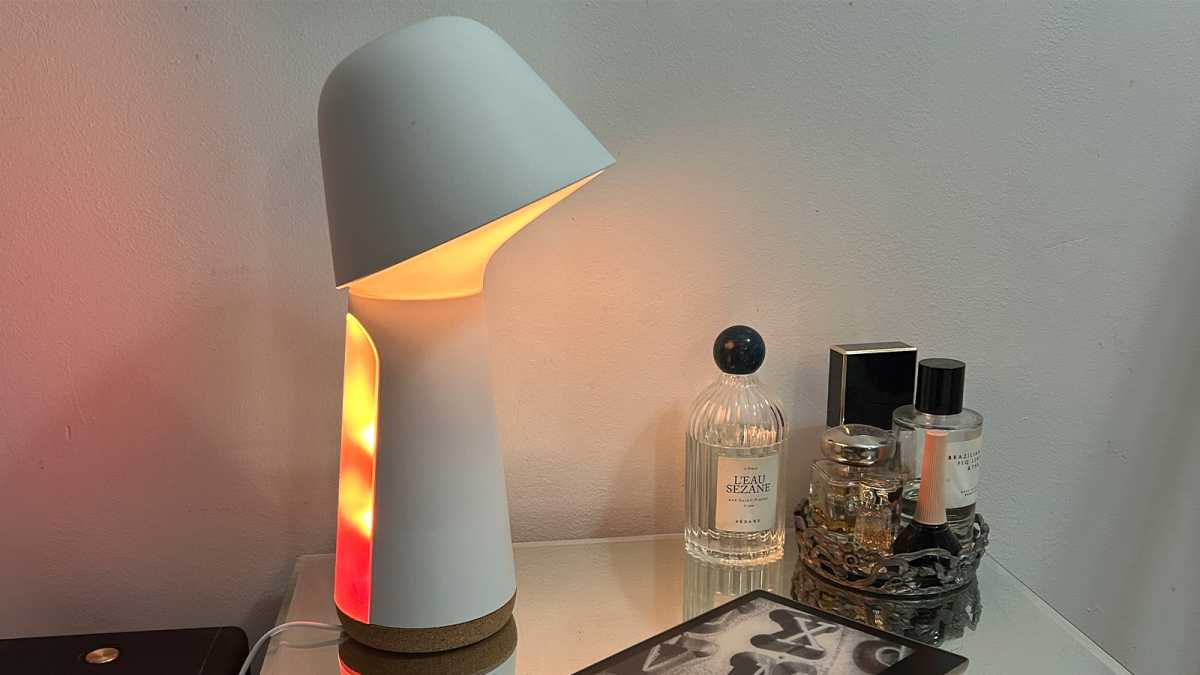
Emma Rowley / Foundry
You can choose between a black or a white model and both look equally good.
It’s around 33cm/13in high and is intended for a bedside table. When you see it in pictures, it looks ceramic but it’s, in fact, made of matt plastic, which is a slight disappointment. It has a cork base that won’t scratch the surface it’s placed on. It weighs around 990g, and most of that weight is in the base, so it’s not easy to knock over.
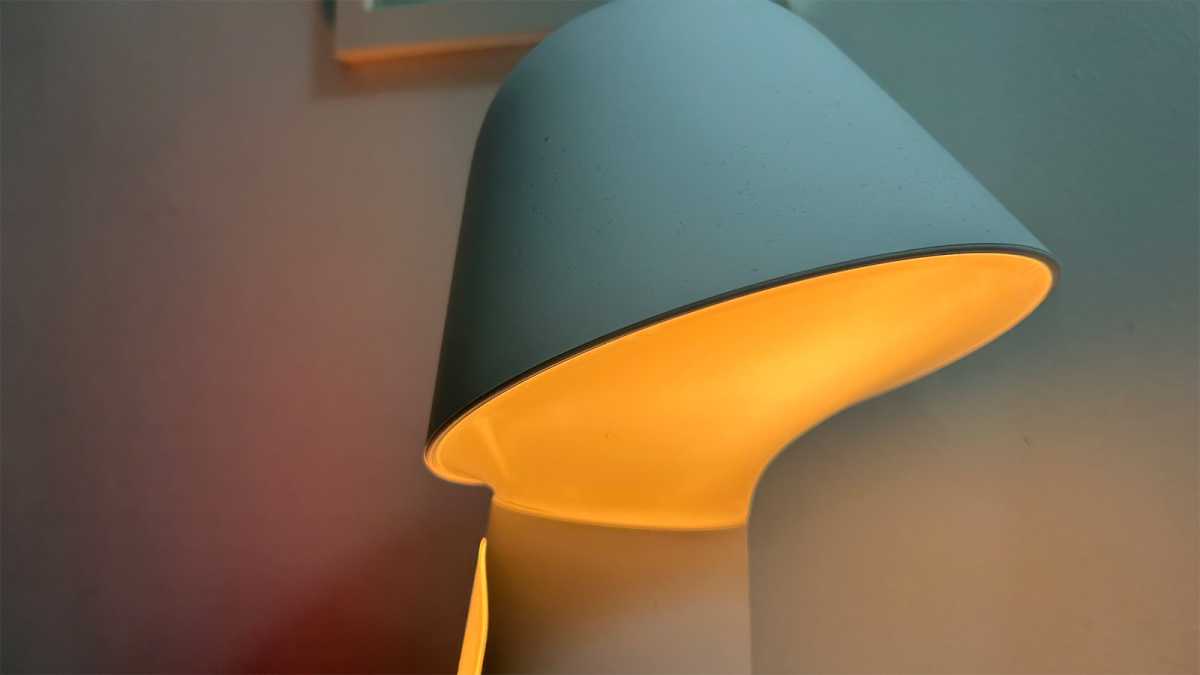
Emma Rowley / Foundry
There are two sets of lights: front and back. The front light is behind a smoked panel, but the three banks of LEDs at the back are only covered by a pane of transparent plastic. It’s designed to throw rays of coloured light against a wall, which it does to impressive effect.
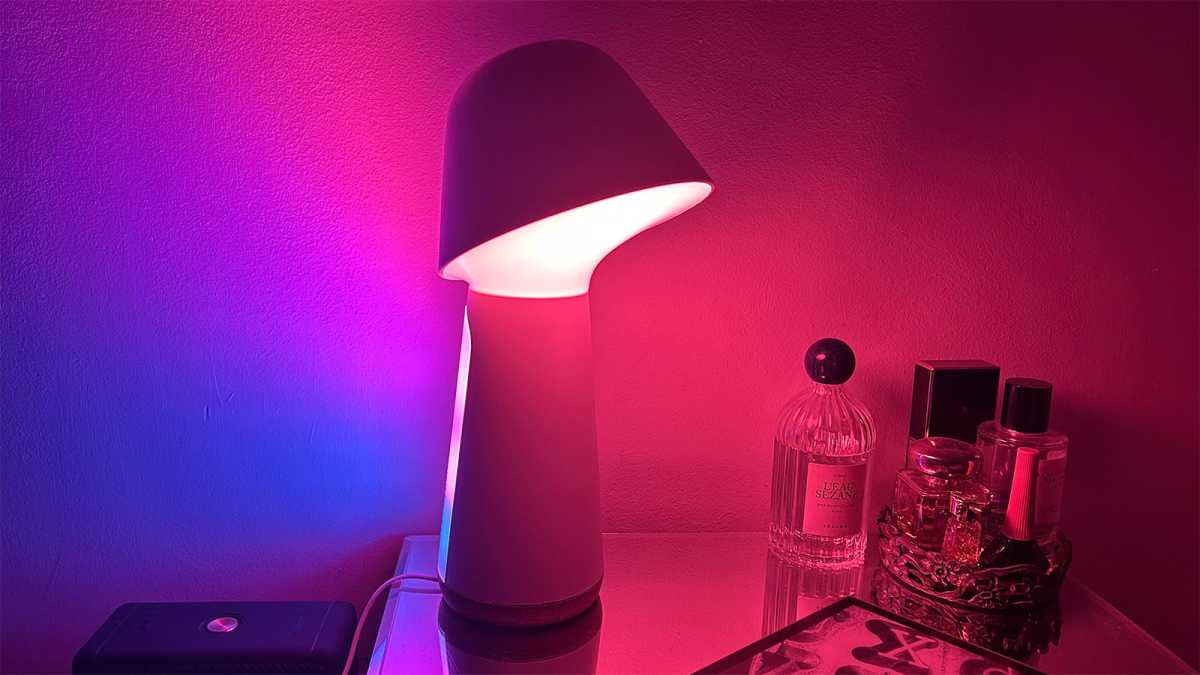
Emma Rowley / Foundry
However, the lights themselves aren’t particularly attractive.
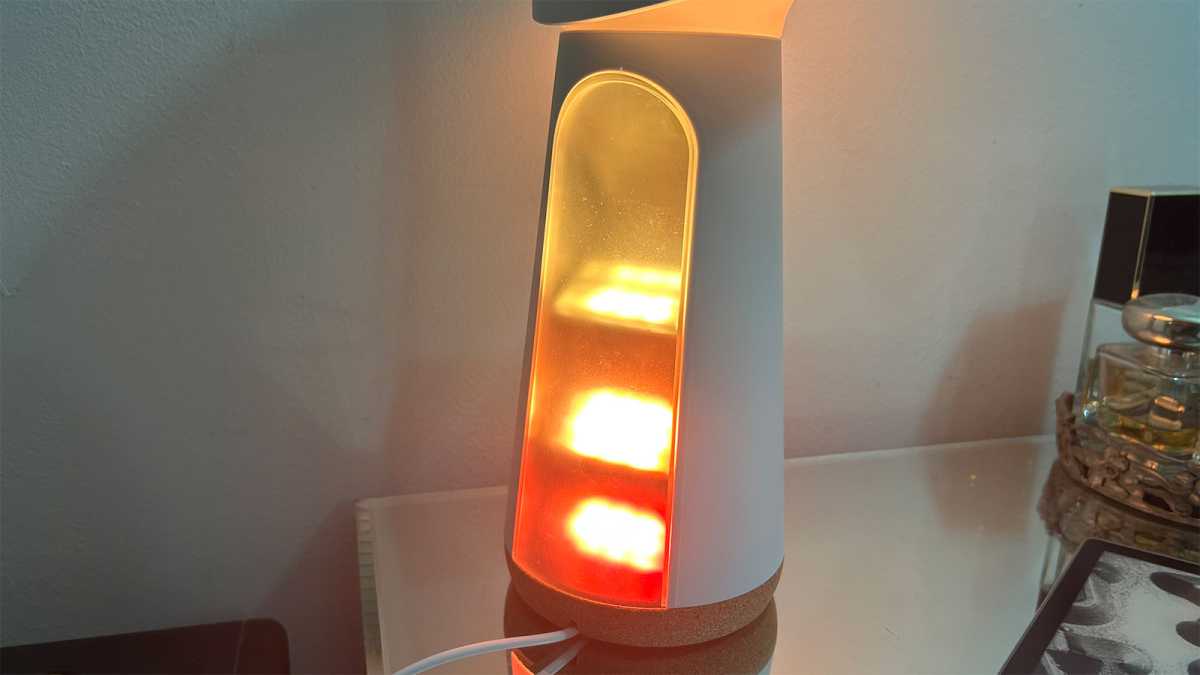
Emma Rowley / Foundry
When choosing a routine, you can opt to use the front, or back lights. The scenes can use them all.
On top of the light are two buttons. One switches the light on and off and toggles between different scenes. Scenes are brightness settings and there are six to choose from, so you can use the Twilight as a bright light, a reading lamp, or on a warmer, more relaxing setting. You can even swivel the lamp head from left to right to point it at your book.
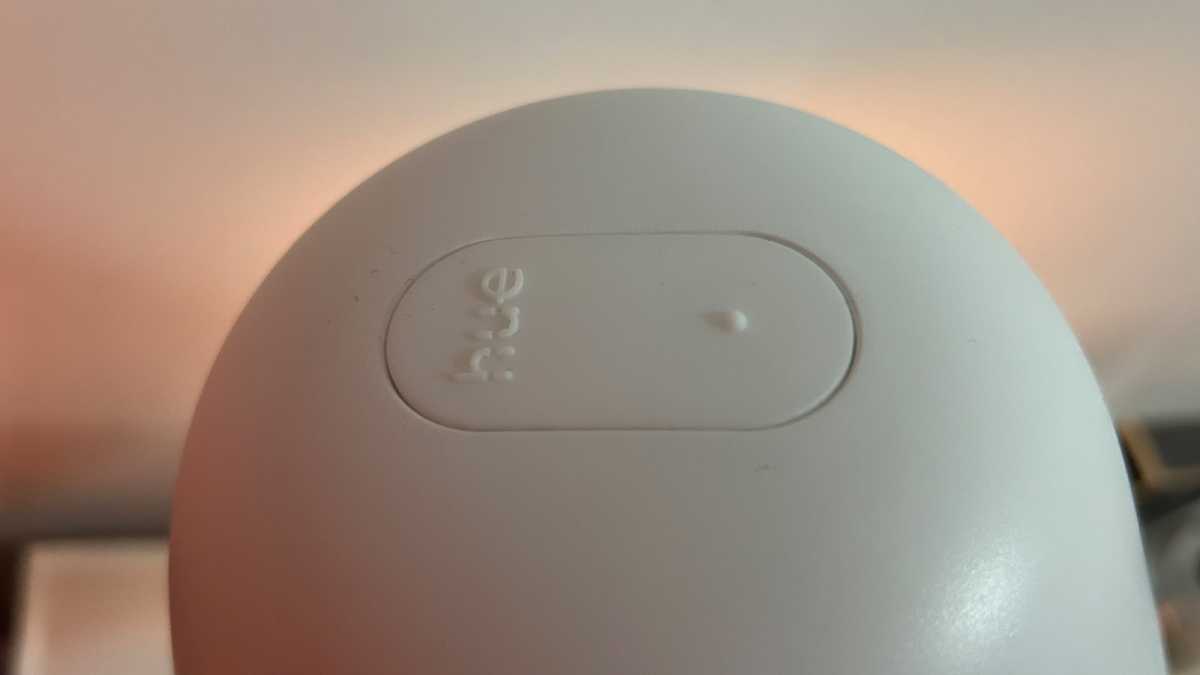
Emma Rowley / Foundry
The other button starts a go-to-sleep automation, which gradually decreases the light’s brightness over a period of time, to help you to get into sleep mode.
The buttons have different tactile features, so you can tell them apart in the dark.
App and Smart Features
- Bluetooth connection
- No weekly scheduling option
- Granular configuration of white or coloured lights
But this is a Philips Hue light, which means that it can do so much more, via its smart settings. You’ll need to download the Philips Hue app, create an account and link the light, which happens via Bluetooth. I found this process to be quick and straightforward.
You’ll then be able to access all the smart features.
The first and most obvious feature is a routine, which you can schedule. So, you can set the light to wake up, go to sleep or come on at the end of a timer. But there’s no option to schedule by day, so if you set an early sunrise alarm for a weekday morning, you’ll need to remember to turn it off at the weekends.
You can also set a scene. You can choose from one of the dozens of preset scenes or customise your own. The Twilight lamp has both white and coloured light options, so there are dozens of searchable options. The defaults are function based: choose from read, energise, concentrate and relax, for example.
Then there are mood settings, including romantic, peaceful, dreamy and party vibes. At the time of writing, you can also choose from a number of Halloween light settings, such as ‘Glowing Grins’, a red, orange and green configuration.
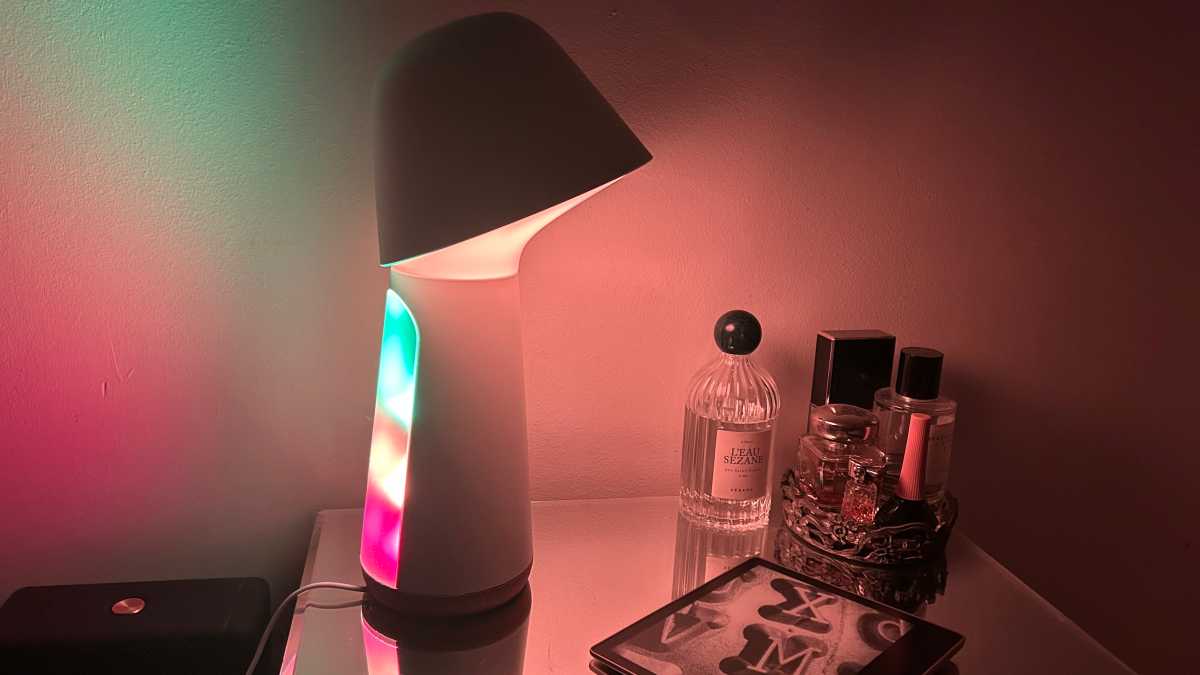
Emma Rowley / Foundry
Some of these settings are likely to be very useful, others just a novelty. You can save the ones you really like to your ‘lights’ page in the app, for quick access.
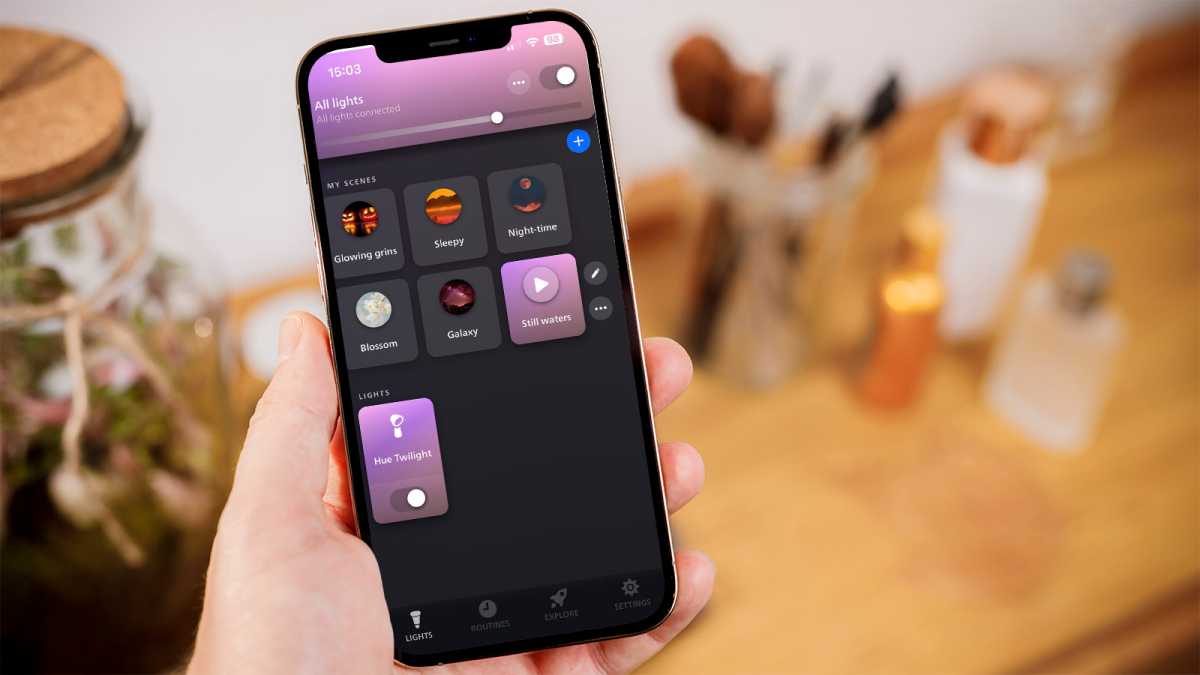
Dominik Tomaszewski / Foundry
If you have a number of Philips Hue lights in your smart home setup, and a Hue Bridge, you can add the Twilight to larger smart home routines, so it’ll switch on – along with your other lights – when you open the door front, or at a specific time of day.
You can also switch your light on or off using voice control, via your Alexa or Google home smart speaker.
Light Alarm Features
If you choose the Philips Twilight as a light alarm, the key advantage is the quality of its light. Cheaper light alarms don’t change colour as seamlessly as the Twilight does, and some produce quite an eerie, cold light.
I liked using the LED banks at the back of the Twilight as a light alarm. It begins to wake you by casting a subtle splash of velvety blue, then lilac, against your wall. By the time you need to wake up, the entire room is warmly illuminated.
When you’re setting a wake up or go to sleep routine, you can choose to use the front or back light, and opt to have the light brighten (or dim) for a period of 10, 20, or 30 minutes.
But it has limitations, as well. You can’t schedule for an entire week at different times, or have a day off.
The other limitation when compared to most light alarms, which can also switch on the radio, play soothing sounds or music, is that there’s no audio option. This won’t matter if you’re using it in conjunction with your smart speaker or as part of a wider smart home setup, but it makes a big difference if you’re buying it to use alone.
Price and Availability
The Philips Hue Twilight has an RRP of £249.99 in the UK and it’s available at this price from the Philips Hue website or from Amazon. In the US, it’s available for $279.99 from Philips Hue.
This makes it one of the priciest light alarms we’ve tested. You can find much more budget-friendly options in our round-up, most of which have additional audio features.
Should you buy the Philips Hue Twilight lamp?
The Twilight lamp is expensive and there are excellent light alarms that cost much less. But I love the design and the high-quality light it produces as a sunrise alarm.
It’s a luxury buy, for sure, but if you know its limitations, you’re unlikely to be disappointed. Plus, if you already have Philips Hue lights and a bridge, it’s much easier to recommend.


